Our today's test subject is Point of View / TGT's GTX 570 Beast. Many of our readers already know that TGT is in charge of overclocking Point of View cards and that Beast stands for crème of the crop – the fastest card in its series.
You may recall that the GTX 570 Beast cost around €420 one month ago, which discouraged many from purchasing the card, but you can find the same card today priced at €360, here.
If we look at the GTX 570 Beast’s GPU clock, which stands at 841MHz, it is clear that the 109MHz factory overclock will leave the competitors in the dust. TGT handpicks only the best GPUs that can take anything you throw at them and then some, be it long gaming hours or overclocking. In fact, there’s still room for additional overclocking despite the hefty overclock.
Point of View / TGT Beast specification:
Part Number TGT-570-A1-BST
Core Clock Speed 841MHz
Processing Cores 480
Memory Clock Speed 3900MHz
Memory Bandwidth 158.4GB/sec
Shader Clock Speed 1682MHz
Bus PCI-E 2.0
Interface 2x dual-link DVI, 1x Mini-HDMI
Running at an impressive 841MHz core clock, the new GTX 570 Beast is available in two versions depending on the choice of the cooler. One features a reference cooler and is a bit cheaper than the second version that features a 9mm slim-line AquaCopper water cooling block. We got the first one and you can see it on the picture below.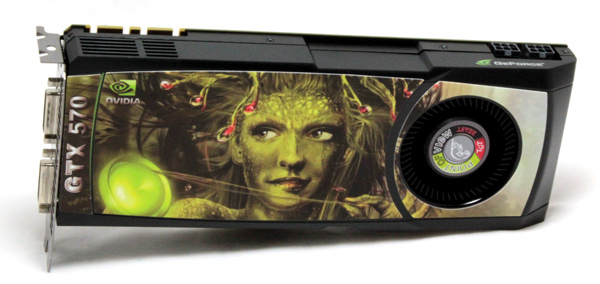
Geforce GTX 580 i GTX 570 cards use the GF110, an improved version of the GF100 used on GTX 480 cards. 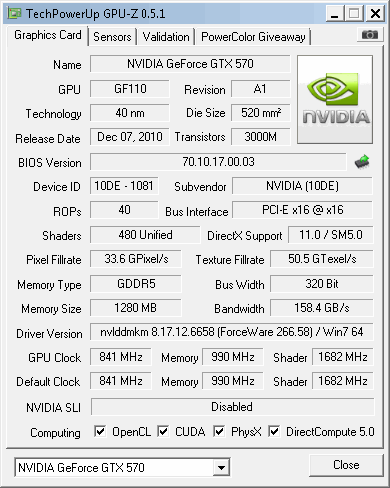
Compared to the GTX 580 however, GTX 570 comes with one less stream multiprocessor, lower operating clocks, less memory and lower memory interface. Still, none of that prevented the GTX 570 to score similarly to the GTX 480 and still retain superior performance-per-watt ratio. As we already said, GTX 570 Beast beat the rest of the lot when it comes to the factory overclock and the GPUZ screenshot proves it.
The card comes in a nicely themed box with a unique way of making sure the card is fixed and safe within the box.
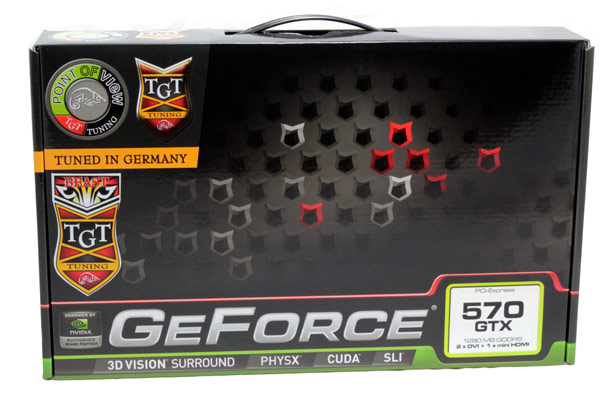
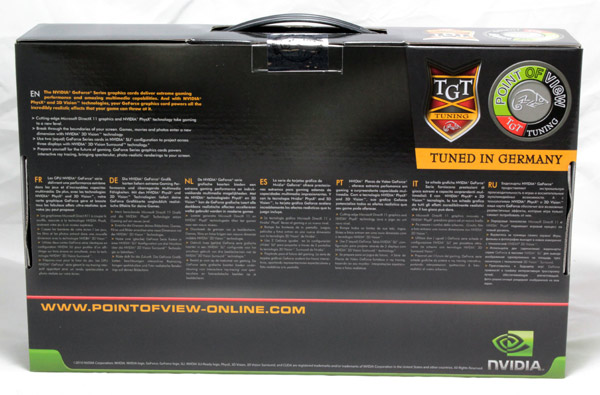

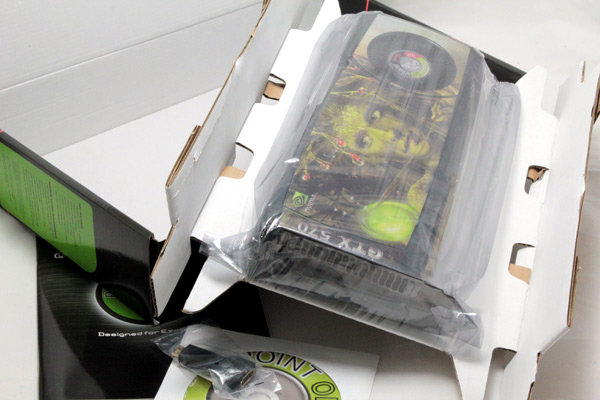
Point of View / TGT stuck to reference cooling for their card. Note that GeForce GTX 570 requires two slots in your system. Thankfully, Nvidia did a great job this time around and managed to get some really good cooling performance. However, since the GTX 570 Beast boasts pretty high clocks, we were afraid it might not be enough. Measurements show that GPU temperatures during intensive operation won’t go over 90°C.

The plastic hood covers the entire card and all that’s visible is the blower-style fan, which exhausts hot air out the back of the system chassis. Geforce GTX 580 and Geforce GTX 570 feature a new adaptive GPU fan control algorithm that smoothes the ramp up/down of the fan speed under load.
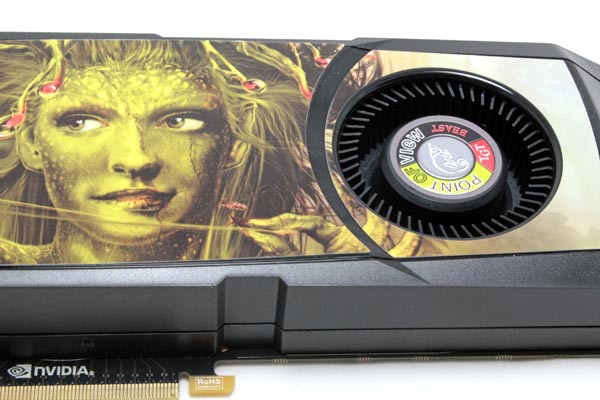
GTX 580/570 is the same size as Geforce GTX 480, measuring 10.5 inches or 26.7 centimeters in length. GTX 570 has two 6-pin power connectors maximum graphics card power 219W (for reference card) compared to GTX 580 which has one 6-pin and 8-pin power connector and maximum graphics card power 244W.
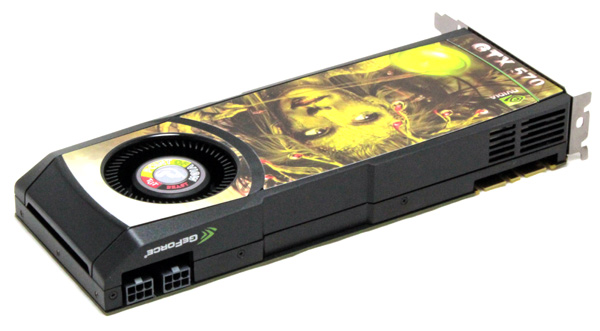
The video engine still have maximum of two display supported, no DisplayPort, (the card also supports DisplayPort if board partners want to use it).
The GTX 570 Beast card has two dual-link DVI ports and one mini-HDMI interface. The mini-HDMI to HDMI converter is included in the card’s bundle. Nvidia included an HDMI sound device within the GPU, so there is no need for connecting the card to your motherboard’s/soundcard’s SPDIF out to get audio and video via HDMI.
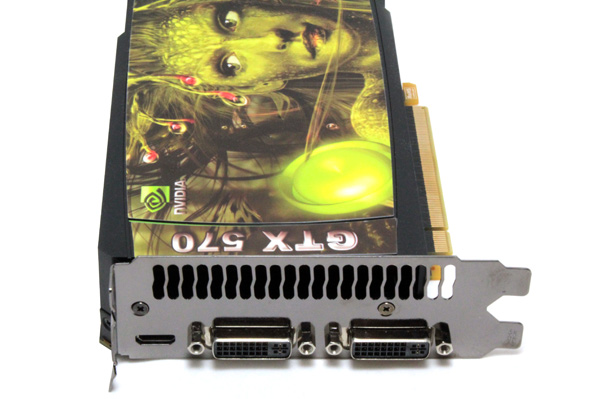
GTX 570 comes with two SLI connectors. This means you can combine up to four GTX 570 cards in SLI mode for improved performance or image quality settings.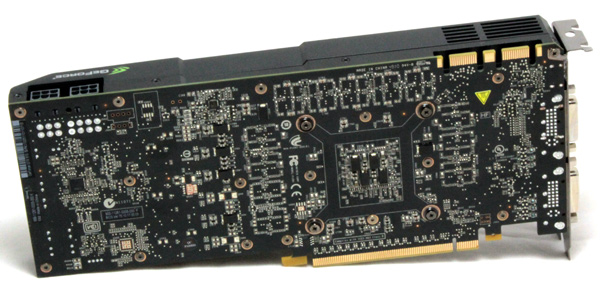
Testbed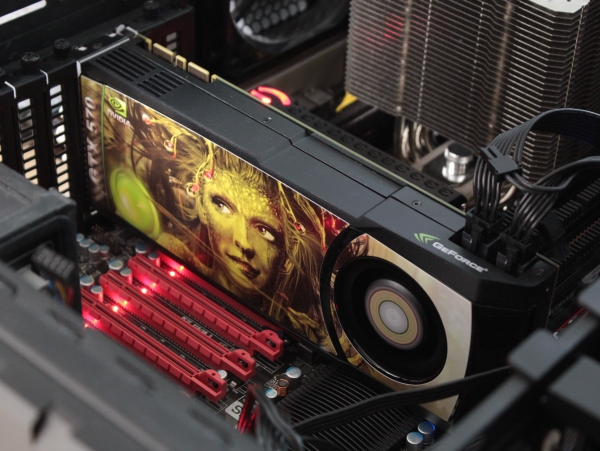
CPU: Core i7 965 XE (Intel EIST and Vdrop enabled)
Memory: 6GB Corsair Dominator 12800 7-7-7-24
Harddisk: OCZ Vertex 2 100 GB
Power Supply: CoolerMaster Silent Pro Gold 800W
Case: CoolerMaster HAF X
Fan Controler: Kaze Master Pro 5.25"
Operating System: Win7 64-bit
Nvidia 266.58_desktop_win7_winvista_64bit
AMD 11.2 CCC
3DMark 2011
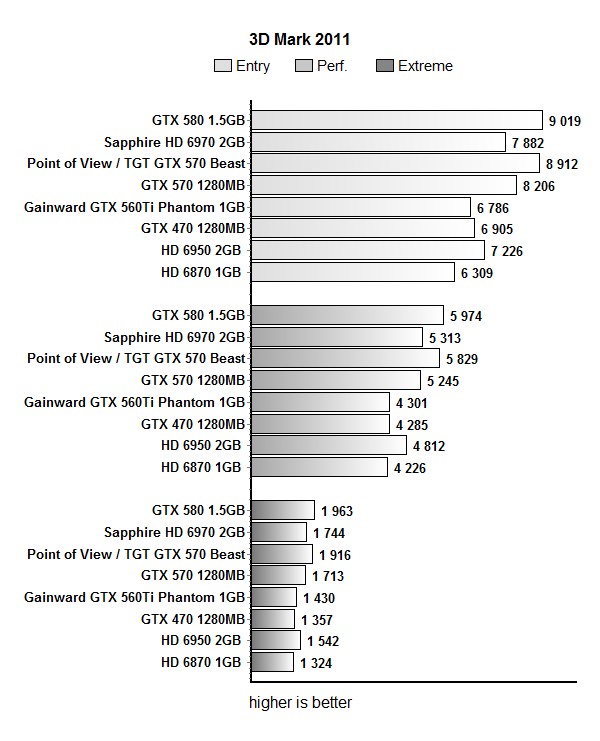
3DMark Vantage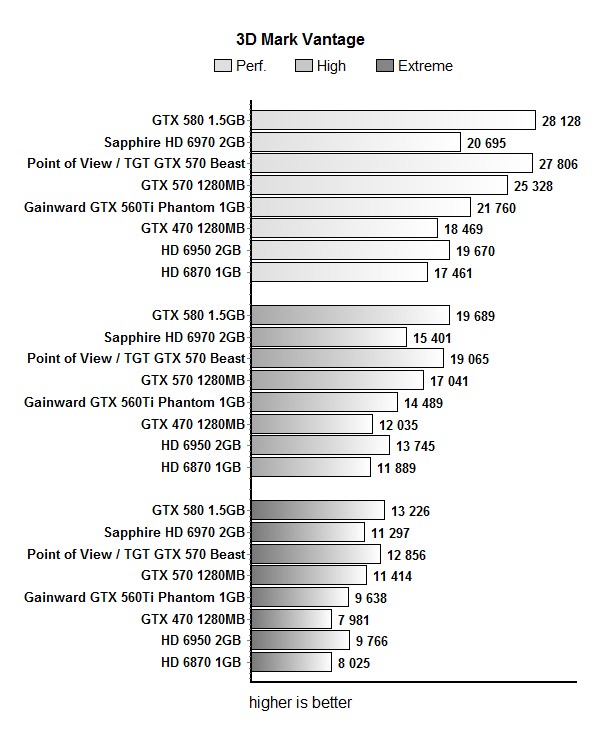
Alien vs Predator
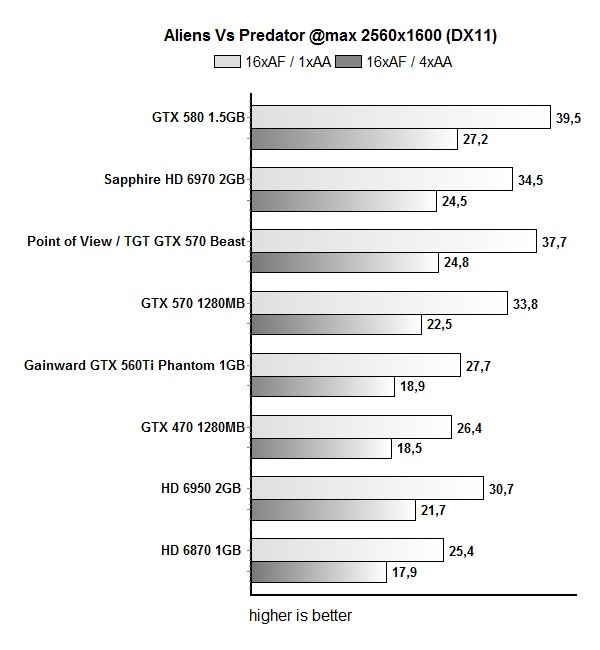
Dirt 2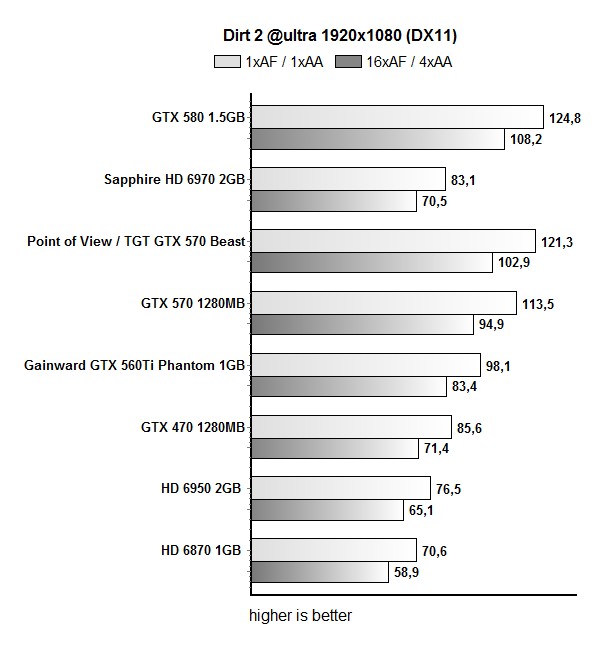
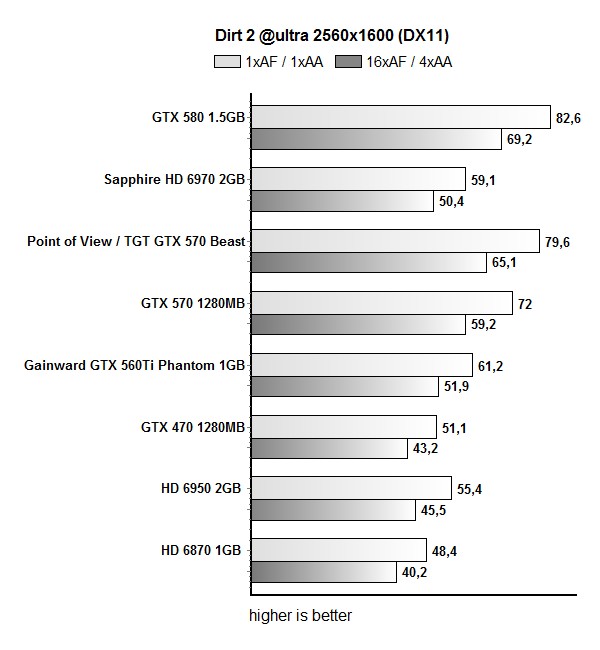
Metro 2033

Unigine Heaven
TessMark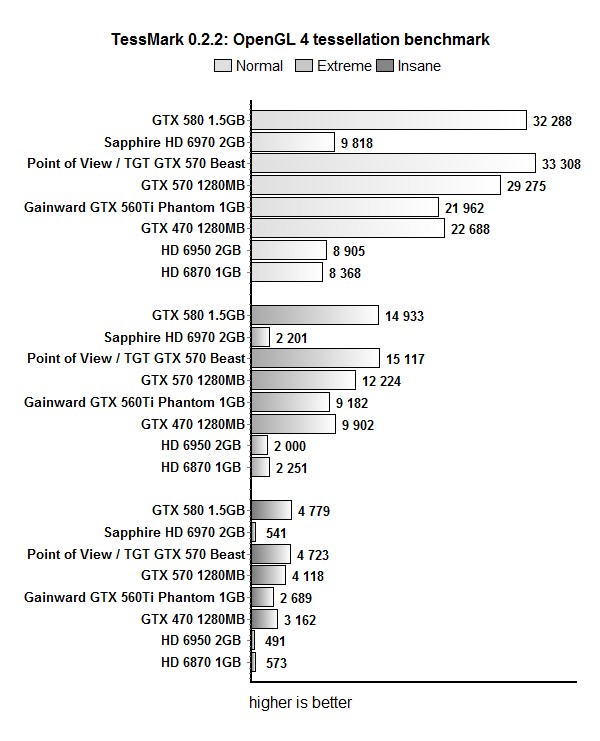
Overclocking
Point of View / TGT GTX 570 Beast comes with a massive factory overclock, but you can always squeeze a few more frames out if you choose to do so. Reference GPU clock is 841MHz and Afterburner reports GPU voltage as 1037mV. 
Afterburner allowed us to push the GPU voltage to 1100mV, which helped in pushing the GPU all the way up to 925MHz. 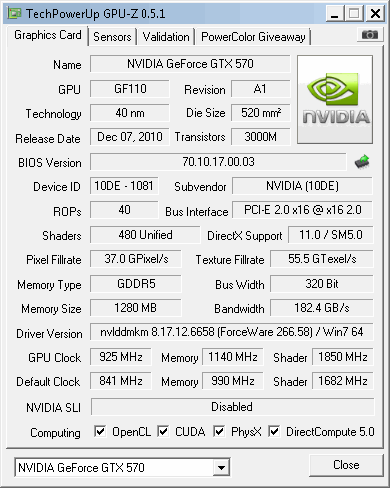
Noise and Thermals
As far as noise levels go, the GTX 570 Beast’s cooler is quiet in idle, with GPU temperature around 44°C.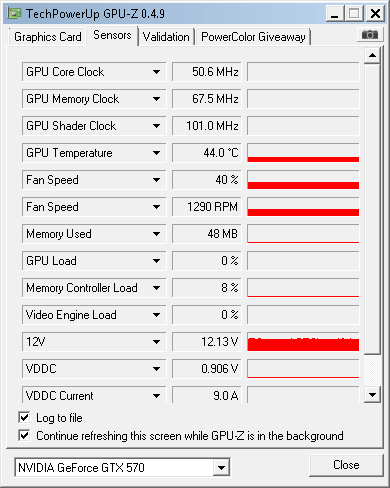
The GTX 570 Beast gets louder during operation, but not too loud. Note however that we were pretty satisfied with noise levels taking in account the much higher clocks and given performance.
Measurements show that GPU temperatures during intensive operation are some 10°C higher than at reference clocks. Note that temperatures will rarely exceed 89°C during gaming, as the GPUz screenshot above proves.
Power Consumption
The GTX 570 Beast‘s performance is great. Thanks to the factory overclock, this card is faster than the GTX 480. It can hold its own when put up against the GTX 580 but its consumption is higher than on the reference card.
When idle, GTX 570 and GTX 570 Beast consume about the same – Beast consumed about 2-3W more.
During intensive operation however, our rig with GTX 570 Beast inside consumed about 40W more than the same rig with GTX 570. This means that the GTX 570 Beast can draw more power than the reference GTX 580.
Point of View / TGT continued with its tradition and bestowed its Beast treatment onto the GTX 570 cards. We say cards because TGT offers two versions of its GTX 570 Beast – an air cooled one and a water cooled one.
We tested the air-cooled one, which runs at 841MHz for the GPU and 3960MHz (effectively) for the GDDR5 memory just like the water cooled one. The 109MHz factory overclocking comes with a warranty but at a slightly higher price as well. The card is available, here, at €360, which is about €70 higher than the most affordable GTX 570 cards. However, €360 is still attractive considering the fact that GTX 570 Beast cost about €420 about a month ago.
Beast has thus practically become synonymous with the fastest factory overclocks. GTX 570 runs at 841/1682/1980 MHz, whereas reference clocks are 732/1646/1900 MHZ.
The GTX 570 Beast we tested uses Nvidia’s reference cooling. Despite the high overclock, reference cooling does a good job in keeping temperatures below 90°C. Of course, the Beast isn’t as quiet as the reference GTX 570, but overall we really liked what we saw. The cooler can be clearly heard during intensive operation, but it’s not too loud. However, the overclock resulted in higher consumption and you should know that the GTX 570 Beast will can draw more than the GTX 580.
With extraordinary performance displayed by the GTX 570 Beast, it definitely deserves the title of the fastest factory overclocked GTX 570. If you’ve developed a taste for factory overclocked cards with only the crème of the crop GPUs, then Point of View / TGT’s GTX 570 Beast card is a safe bet.

